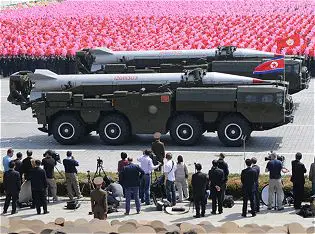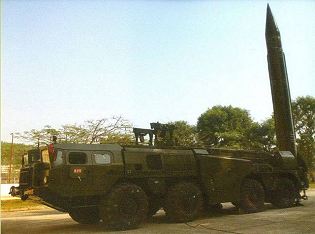|
|
|||||||||||||||||||||||||||||||||||
|
Hwasong-5 (Scud-B) short-range tactical ballistic missile
|
|||||||||||||||||||||||||||||||||||
|
|
|||||||||||||||||||||||||||||||||||
|
|
|||||||||||||||||||||||||||||||||||
|
a
|
|||||||||||||||||||||||||||||||||||
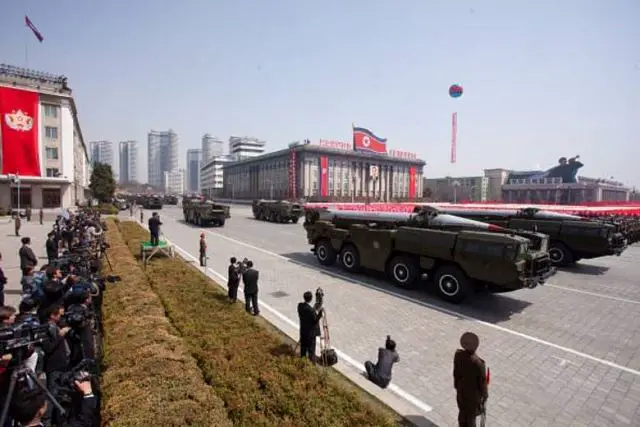 |
|||||||||||||||||||||||||||||||||||
| The Hwasong-5 is a surface-to-surface short-range tactical ballistic missile derived from the Soviet R-17 Elbrus missile and based on the Russian-made ballistic missile Scud-B. The first missile prototypes were completed in 1984. Designated Hwasong-5, and known in the West as the "Scud Mod. B". The first test flights occurred in April 1984, but the first version saw only limited production, and no operational deployment, as its purpose was only to validate the production process. Production of the latest version of the Hwasong-5 began at a slow rate in 1985. The North Koreans have built an estimated total of 300 ‘Scud B’ missiles as well as the mobile launch systems, ending production in 1991 or 1992. A 2006 US report estimated the total number of ‘Scud B,’ ‘Scud C,’ and ‘Scud D’ missiles around 600. In 1985, Iran acquired 90 to 100 Hwasong-5 missiles from North Korea in a deal worth US$500M. As part of the deal, North Korea agreed on a missile technology transfer, and it helped Iran establish a production line. In Iran, the Hwasong-5 was produced as the Shahab-1. | |||||||||||||||||||||||||||||||||||
| Variants | |||||||||||||||||||||||||||||||||||
| - Shahab-1: Iranian version of Hwasong-5 | |||||||||||||||||||||||||||||||||||
| Technical Data | |||||||||||||||||||||||||||||||||||
| Back to top | |||||||||||||||||||||||||||||||||||
|
|||||||||||||||||||||||||||||||||||
|
|||||||||||||||||||||||||||||||||||
| Back to top | |||||||||||||||||||||||||||||||||||
- Home
- News
- Defence News
- Defence Exhibitions
- LIMA 2023
- IDEX 2023 exhibitors vistors
- AUSA 2022 News
- MSPO 2022 News
- ADEX 2022 News
- Defense News France
- Eurosatory 2022
- DSA 2022 News Official Online Show Daily
- WDS Saudi Arabia
- UMEX 2022 News
- Defense Exhibitions 2021
- IDEX 2021 exhibitors vistors
- ShieldAfrica 2021 exhibitors vistors
- IDEF 2021 exhibitors visitors
- SOFINS 2021 News Online Show Daily
- DEFEA 2021 Exhibitors - Visitors
- Army-2021 News Show Daily
- MSPO 2021 News Official Online Show Daily
- AUSA 2021 News
- DSEI 2021
- Partner 2021 News
- Milipol Paris 2021
- EDEX 2021 News
- ExpoDefensa 2021
- FEINDEF 2021 News
- Defense Exhibitions 2020
- Defense Exhibitions 2019
- GDA 2019 News Official Show Daily
- ShieldAfrica 2019 Visitors Exhibitors Information
- IDEX 2019 Visitors Exhibitors Information
- Enforce TAC 2019 News Show Daily
- MILEX 2019 News Online Show Daily Minsk Belarus
- SITDEF 2019 Visitors Exhibitors Information
- SOFINS 2019 News Online Show Daily
- LAAD 2019 News Online Show Daily
- IDEF 2019 News Online Show Daily
- FEINDEF 2019 News Online Show Daily
- IDET 2019 News Online Show Daily
- ISDEF 2019 Visitors Exhibitors Information
- Partner 2019 News Online Show Daily
- Army-2019 News Russia Online Show Daily
- Milipol Paris 2019 News Online Show Daily
- ExpoDefensa 2019 Exhibitors - Vistors - Information
- BIDEC 2019 Exhibitors Visitors Information
- AUSA 2019 News Online Show Daily
- DSEI 2019 exhibitors visitors information
- MSPO 2019 Exhibitors Visitors Information
- Defense & Security Thailand 2019 News Official Show Daily
- Defence Exhibitions 2018
- BSDA 2018 News Online Show Daily
- KADEX 2018 Visitors Exhibitors Information
- SOFIC 2018 News Online Show Daily
- Warrior Competition 2018 KASOTC News
- DefExpo 2018 News Show Daily
- DSA 2018 Visitors Exhibitors Information
- SOFEX 2018 Visitors Exhibitors Information
- Enforce Tac 2018 News
- Singapore AirShow 2018 News
- Shot Show 2018 News Show Daily
- IAV 2018 News Show Daily
- UMEX 2018 UAE News
- Eurosatory 2018 Visitors Exhibitors Information
- AirShow China 2018 News Online Show Daily
- IndoDefence 2018 Visitors Exhibitors Information
- IDEAS 2018 Visitors Exhibitors Information
- EDEX 2018 Visitors Exhibitors Information
- AUSA 2018 News Online Show Daily
- AAD 2018 Visitors Exhibitors Information
- DVD 2018 News Online Show Daily
- ADEX 2018 Visitors Exhibitors Information
- DX Korea 2018 Visitors Exhibitors Information
- Army-2018 Russia News Online Show Daily
- MSPO 2018 Visitors Exhibitors Information
- Defence Exhibitions 2017
- ShieldAfrica 2017 News Exhibitors Visitors
- LAAD 2017 News Exhibitors Visitors
- IDEX 2017 News Exhibitors Visitors
- SOFINS 2017 News Exhibitors Visitors
- SITDEF 2017 Exhibitors Visitors News
- SOFIC 2017 Online Show Daily News - Report - Coverage
- IDEF 2017 News Visitors Exhibitors
- IDET 2017 Exhibitors Visitors News
- Partner 2017 Online show Daily News
- Army-2017 News Online show Daily
- MSPO 2017 News Visitors Exhibitors
- AUSA 2017 Online Show Daily News
- Expodefensa 2017 News Exhibitors Visitors
- Arms & Security 2017 Online show Daily News
- BIDEC 2017 News Visitors Exhibitors
- Defense & Security Thailand 2017 Official Online show Daily News
- Milipol Paris 2017 Online Show Daily News
- GDA 2017 Online Show Daily News
- ADEX 2017 South Korea Online show Daily News
- DSEI 2017 News Visitors Exhibitors
- Defence Exhibition 2016
- IDEAS 2016 News Visitors Exhibitors
- High Tech Port 2016 News Exhibitors Visitors
- Airshow China 2016 Online Show Daily News - Report - Coverage
- INDO DEFENCE 2016 Online Show Daily News - Report - Coverage
- AUSA 2016 Online Show Daily News - Report - Coverage
- ADEX 2016 News Visitors Exhibitors
- AAD 2016 Online Show Daily News - Coverage - Report
- Army 2016 News Exhibitors Visitors
- MSPO 2016 news visitors exhibitors
- Eurosatory 2016 News Exhibitors Visitors
- KADEX 2016 News Visitors Exhibitors
- SOFEX 2016 News Exhibitors Visitors
- Warrior Competition 2016 KASOTC Coverage - Report - News
- DSA 2016 News Visitors Exhibitors
- Defexpo 2016 Online Show Daily News
- Defexpo 2016 Official Online Show Daily News - Coverage - Report
- ISNR 2016 Online Show Daily News
- KIDEC 2016 news visitors exhibitors
- IWA 2016 Online Show Daily News
- Defence Exhibitions 2015
- Expodefensa 2015 News Exhibitors Visitors
- Milipol 2015 News - Report - Coverage
- AUSA 2015 Online Show Daily News - Coverage - Report
- Defense & Security 2015 News Visitors Exhibitors
- APHS 2015 News Exhibitors Visitors
- MSPO 2015 News Exhibitors Visitors
- RAE 2015 News Exhibitors Visitors
- DSEI 2015 News Exhibitors Visitors
- Partner 2015 Official Online Show Daily News - Coverage - Report
- IDET 2015 News Exhibitors Visitors
- SITDEF 2015 News Exhibitors Visitors
- IDEF 2015 News - Coverage - Report
- SOFINS 2015 News - Coverage - Report
- IDEX 2015 News Exhibitors Visitors
- ARMY 2015 Russia News Coverage Report
- Defence Exhibitions 2014
- IndoDefence 2014 News Information Exhibitors Visitors
- AirShow China 2014 news - coverage - report
- AUSA 2014 Show News Information Exhibitors Visitors
- IDEAS 2014 News Information Exhibitors Visitors
- ADEX 2014 Show News Information Exhibitors Visitors
- MSPO 2014 Show News Information Exhibitors Visitors
- AAD 2014 Show News Exhibitors Visitors Information
- Defexpo 2014 Show News Information Exhibitors Visitors
- Eurosatory 2014 Show News Information Exhibitors Visitors
- SOFEX 2014 Show News Information Exhibitors Visitors
- KADEX 2014 Show News Information Exhibitors Visitors
- CIDEX 2014 Show News Information Exhibitors Visitors
- IDEB 2014 Show News Information Exhibitors Visitors
- DSA 2014 Show News Information Exhibitors Visitors
- Defence Exhibitions 2013
- IDEX 2013
- IDEF 2013 Defence Industry Fair
- Partner 2013 news coverage report
- IDET 2013
- 14 July 2013 French army parade pictures
- Défilé militaire 14 juillet 2013 photos - vidéo
- FED 2013 Meeting - Forum Defence Industry
- LAAD 2013 defence exhibition
- RAE 2013 Russian Arms Expo News - Pictures - Video
- IAV 2013 Conference Exhibition
- SITDEF 2013 News Coverage Report
- SITDEF 2013 Show Daily News - Coverage - Report
- TADTE 2013 Show daily news coverage report
- MSPO 2013 Defence Exhibition
- AUSA 2013 U.S. Army Annual Meeting & Exposition
- DSEI 2013 Defence & Security Exhibition
- Milipol 2013 Internal State Security Exhibition
- Defence Exhibitions 2012
- Defence Exhibitions 2011
- ARG News
- Defense Web TV
- Defence News
- Defence Industry
- World Army Equipment
- Focus / Analysis
- Advertising
- Send Press Release
Defense Breaking News
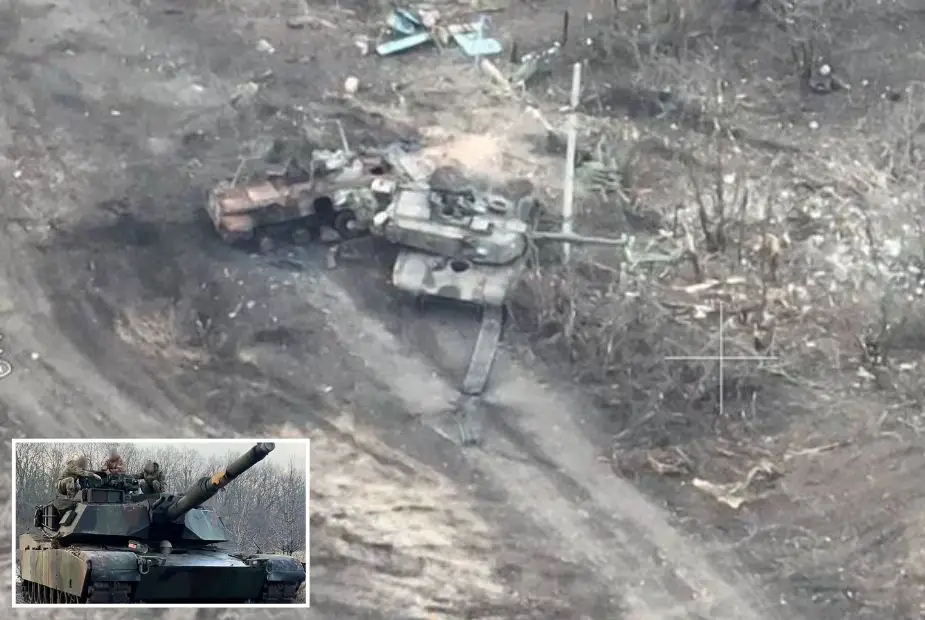
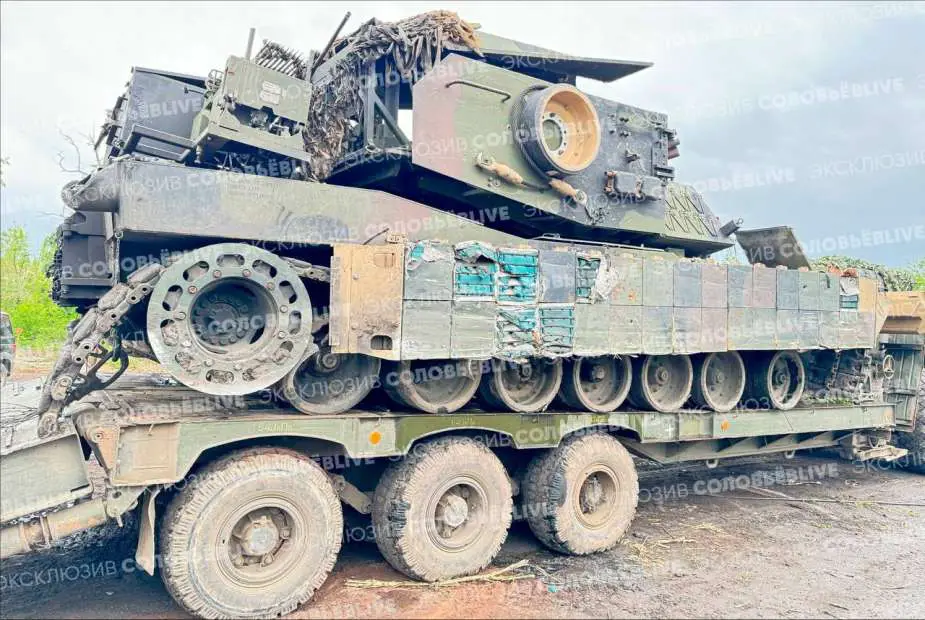
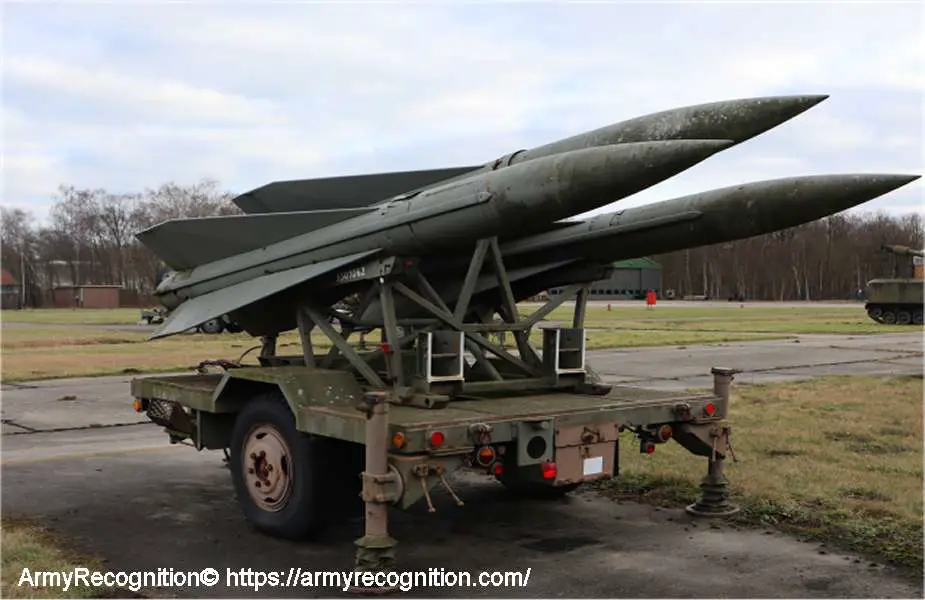
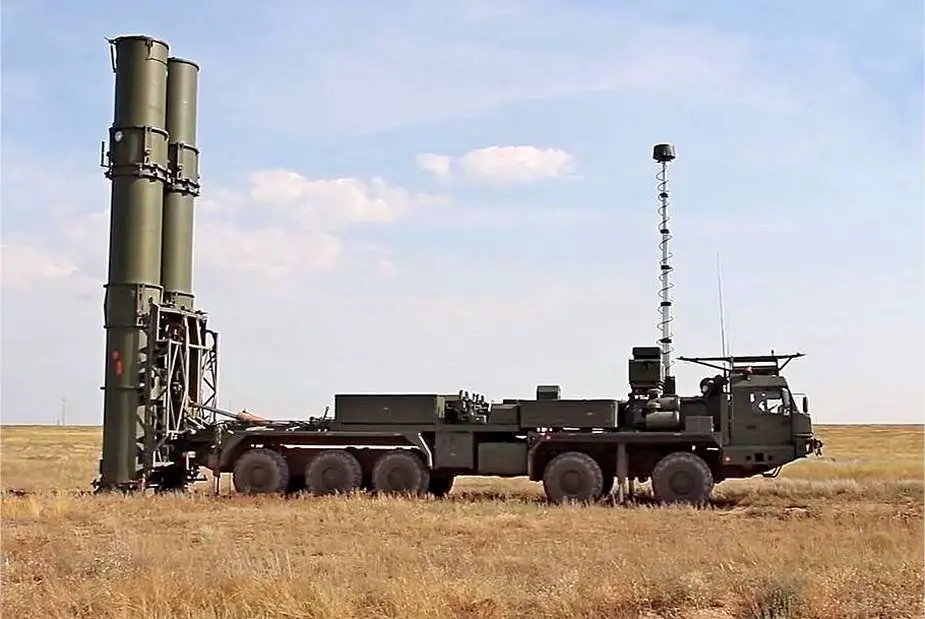

More In : Ukraine - Russia conflict war 2022
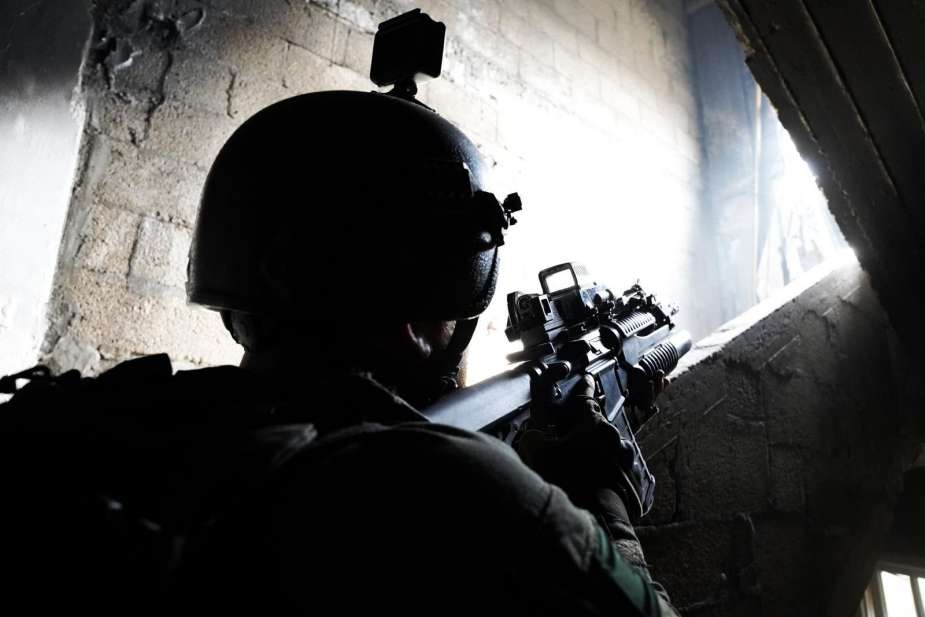
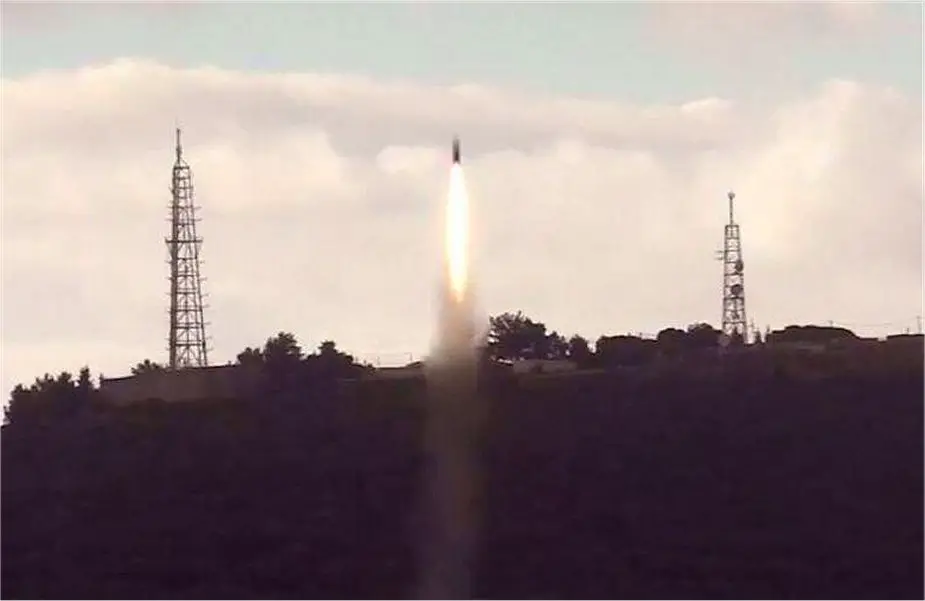
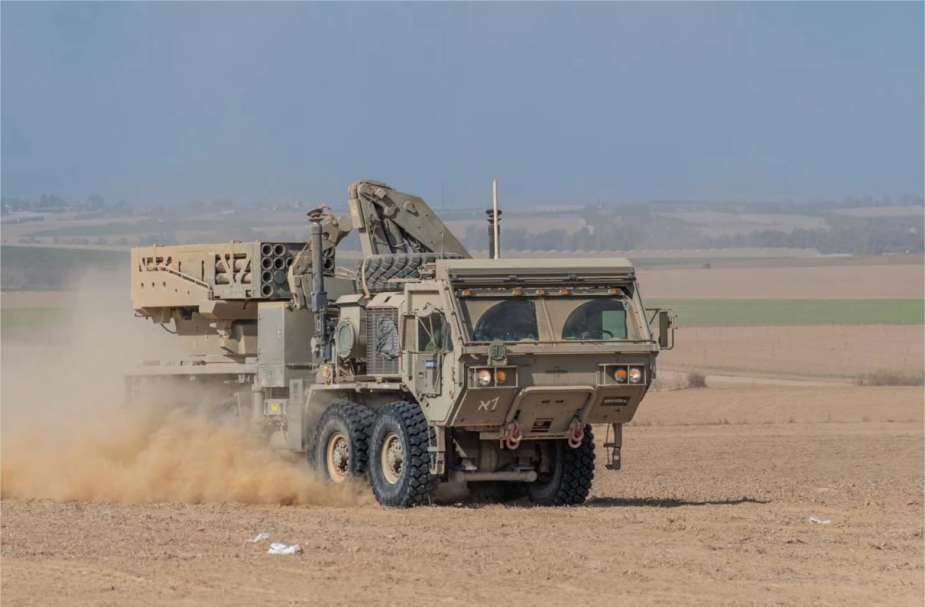
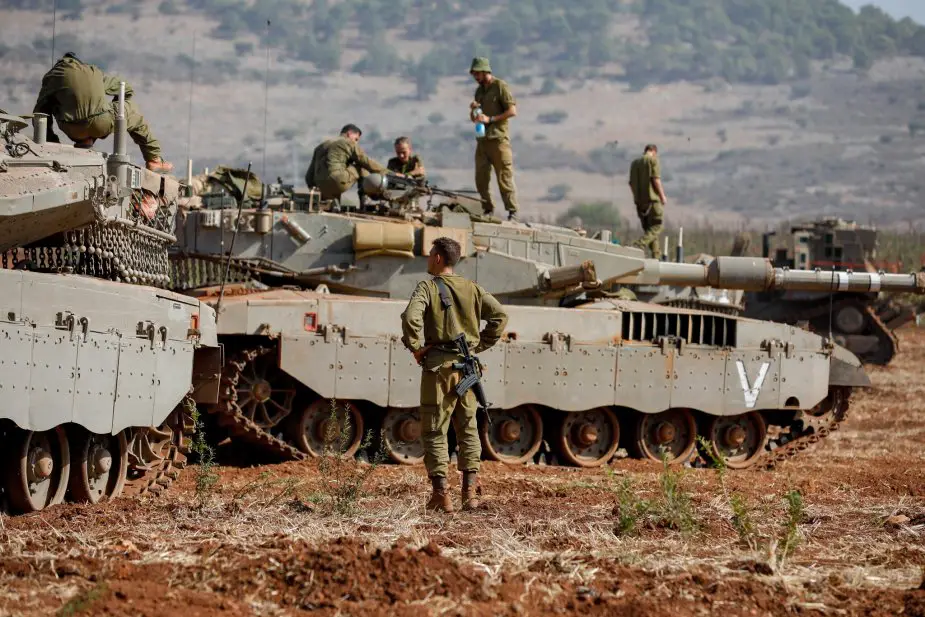
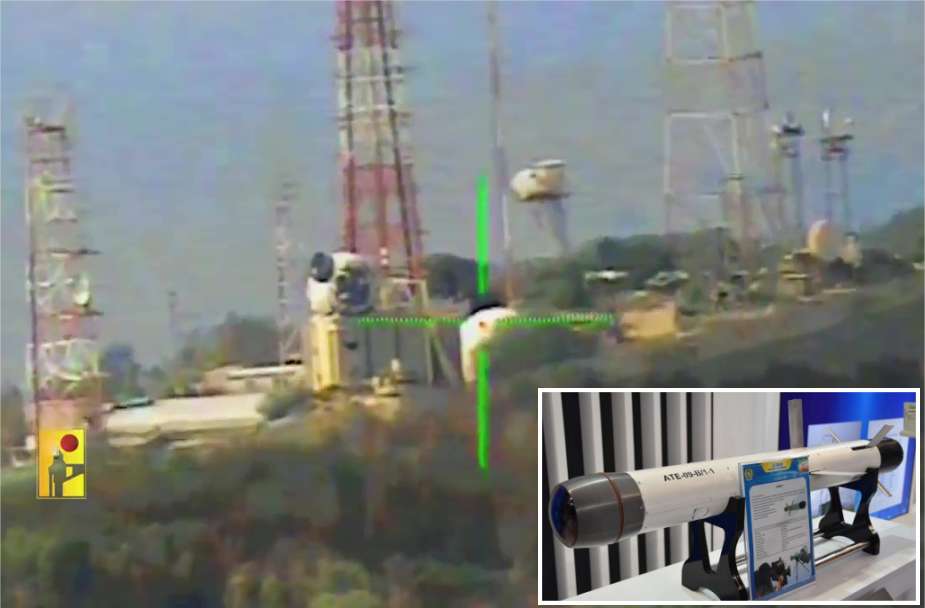
More In : Hamas Gaza - Israel War 2023
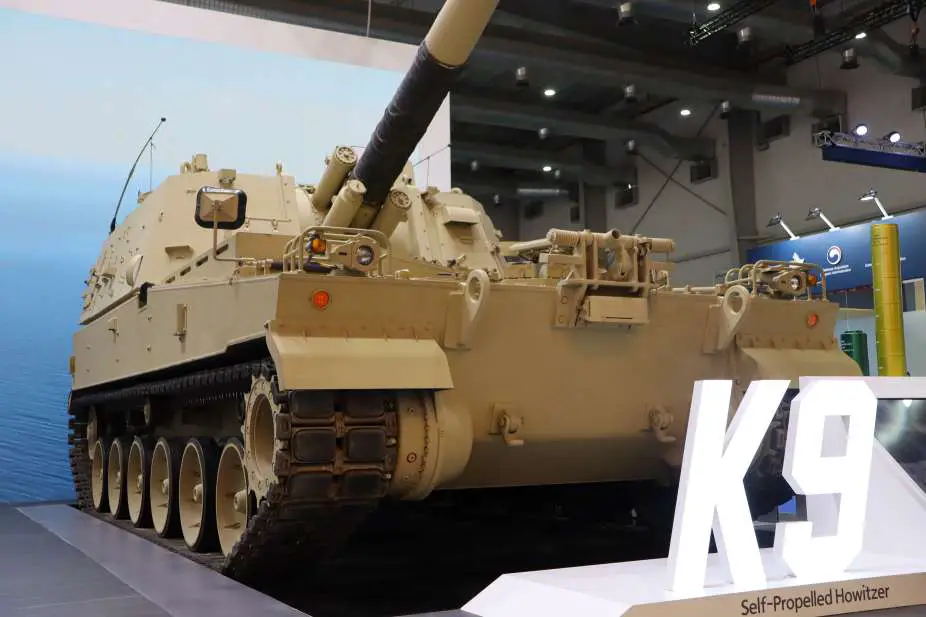
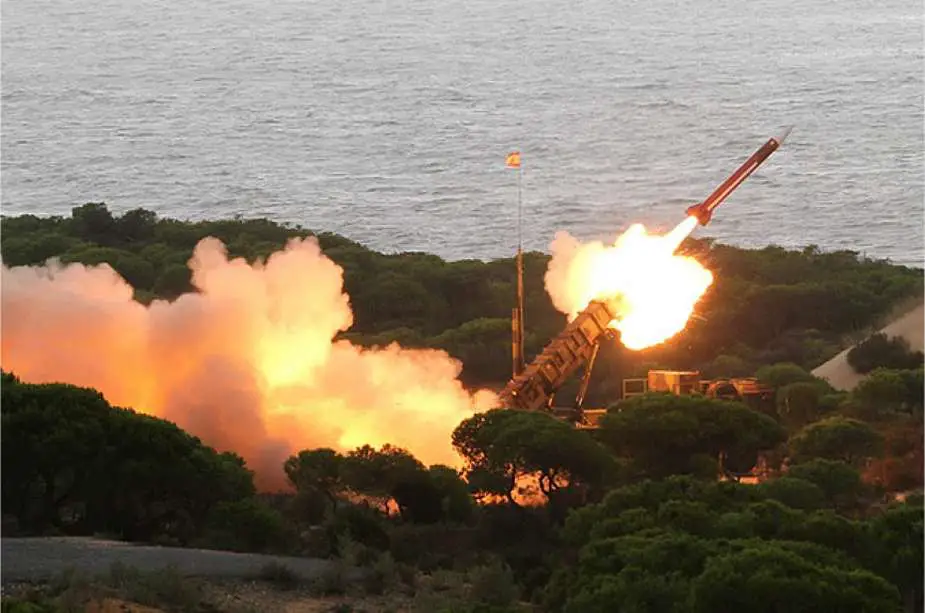
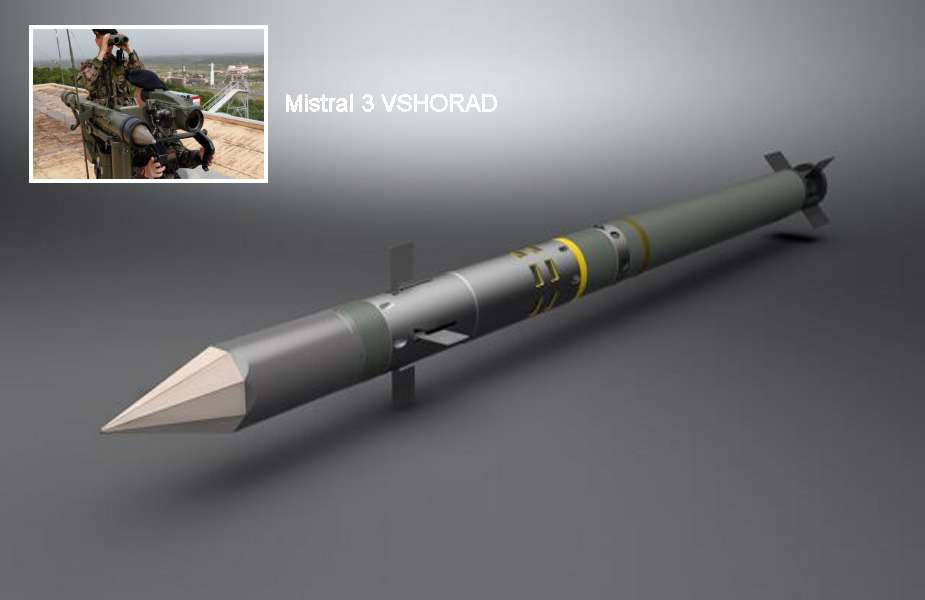
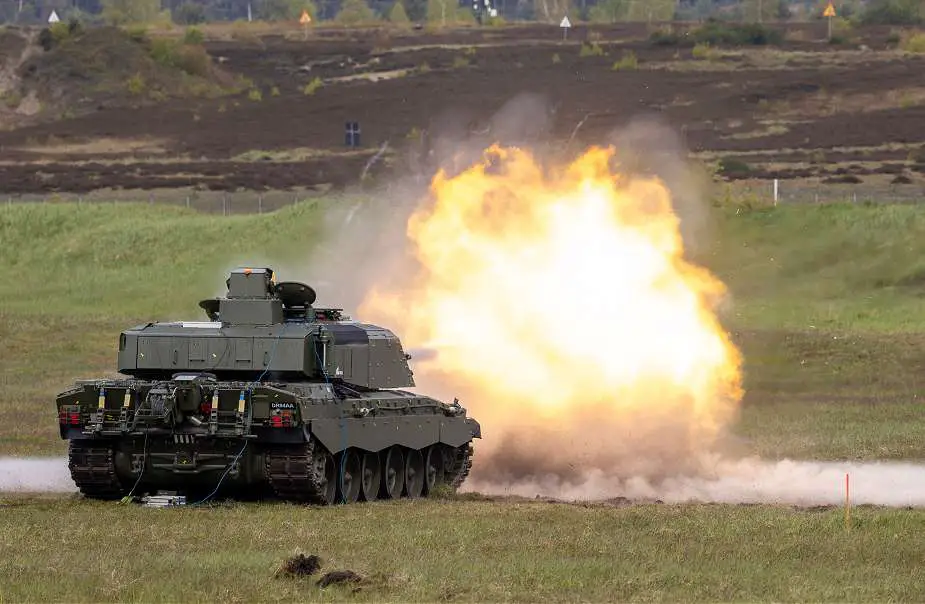
- Home
- News
- Defence News
- Defence Exhibitions
- LIMA 2023
- IDEX 2023 exhibitors vistors
- AUSA 2022 News
- MSPO 2022 News
- ADEX 2022 News
- Defense News France
- Eurosatory 2022
- DSA 2022 News Official Online Show Daily
- WDS Saudi Arabia
- UMEX 2022 News
- Defense Exhibitions 2021
- IDEX 2021 exhibitors vistors
- ShieldAfrica 2021 exhibitors vistors
- IDEF 2021 exhibitors visitors
- SOFINS 2021 News Online Show Daily
- DEFEA 2021 Exhibitors - Visitors
- Army-2021 News Show Daily
- MSPO 2021 News Official Online Show Daily
- AUSA 2021 News
- DSEI 2021
- Partner 2021 News
- Milipol Paris 2021
- EDEX 2021 News
- ExpoDefensa 2021
- FEINDEF 2021 News
- Defense Exhibitions 2020
- Defense Exhibitions 2019
- GDA 2019 News Official Show Daily
- ShieldAfrica 2019 Visitors Exhibitors Information
- IDEX 2019 Visitors Exhibitors Information
- Enforce TAC 2019 News Show Daily
- MILEX 2019 News Online Show Daily Minsk Belarus
- SITDEF 2019 Visitors Exhibitors Information
- SOFINS 2019 News Online Show Daily
- LAAD 2019 News Online Show Daily
- IDEF 2019 News Online Show Daily
- FEINDEF 2019 News Online Show Daily
- IDET 2019 News Online Show Daily
- ISDEF 2019 Visitors Exhibitors Information
- Partner 2019 News Online Show Daily
- Army-2019 News Russia Online Show Daily
- Milipol Paris 2019 News Online Show Daily
- ExpoDefensa 2019 Exhibitors - Vistors - Information
- BIDEC 2019 Exhibitors Visitors Information
- AUSA 2019 News Online Show Daily
- DSEI 2019 exhibitors visitors information
- MSPO 2019 Exhibitors Visitors Information
- Defense & Security Thailand 2019 News Official Show Daily
- Defence Exhibitions 2018
- BSDA 2018 News Online Show Daily
- KADEX 2018 Visitors Exhibitors Information
- SOFIC 2018 News Online Show Daily
- Warrior Competition 2018 KASOTC News
- DefExpo 2018 News Show Daily
- DSA 2018 Visitors Exhibitors Information
- SOFEX 2018 Visitors Exhibitors Information
- Enforce Tac 2018 News
- Singapore AirShow 2018 News
- Shot Show 2018 News Show Daily
- IAV 2018 News Show Daily
- UMEX 2018 UAE News
- Eurosatory 2018 Visitors Exhibitors Information
- AirShow China 2018 News Online Show Daily
- IndoDefence 2018 Visitors Exhibitors Information
- IDEAS 2018 Visitors Exhibitors Information
- EDEX 2018 Visitors Exhibitors Information
- AUSA 2018 News Online Show Daily
- AAD 2018 Visitors Exhibitors Information
- DVD 2018 News Online Show Daily
- ADEX 2018 Visitors Exhibitors Information
- DX Korea 2018 Visitors Exhibitors Information
- Army-2018 Russia News Online Show Daily
- MSPO 2018 Visitors Exhibitors Information
- Defence Exhibitions 2017
- ShieldAfrica 2017 News Exhibitors Visitors
- LAAD 2017 News Exhibitors Visitors
- IDEX 2017 News Exhibitors Visitors
- SOFINS 2017 News Exhibitors Visitors
- SITDEF 2017 Exhibitors Visitors News
- SOFIC 2017 Online Show Daily News - Report - Coverage
- IDEF 2017 News Visitors Exhibitors
- IDET 2017 Exhibitors Visitors News
- Partner 2017 Online show Daily News
- Army-2017 News Online show Daily
- MSPO 2017 News Visitors Exhibitors
- AUSA 2017 Online Show Daily News
- Expodefensa 2017 News Exhibitors Visitors
- Arms & Security 2017 Online show Daily News
- BIDEC 2017 News Visitors Exhibitors
- Defense & Security Thailand 2017 Official Online show Daily News
- Milipol Paris 2017 Online Show Daily News
- GDA 2017 Online Show Daily News
- ADEX 2017 South Korea Online show Daily News
- DSEI 2017 News Visitors Exhibitors
- Defence Exhibition 2016
- IDEAS 2016 News Visitors Exhibitors
- High Tech Port 2016 News Exhibitors Visitors
- Airshow China 2016 Online Show Daily News - Report - Coverage
- INDO DEFENCE 2016 Online Show Daily News - Report - Coverage
- AUSA 2016 Online Show Daily News - Report - Coverage
- ADEX 2016 News Visitors Exhibitors
- AAD 2016 Online Show Daily News - Coverage - Report
- Army 2016 News Exhibitors Visitors
- MSPO 2016 news visitors exhibitors
- Eurosatory 2016 News Exhibitors Visitors
- KADEX 2016 News Visitors Exhibitors
- SOFEX 2016 News Exhibitors Visitors
- Warrior Competition 2016 KASOTC Coverage - Report - News
- DSA 2016 News Visitors Exhibitors
- Defexpo 2016 Online Show Daily News
- Defexpo 2016 Official Online Show Daily News - Coverage - Report
- ISNR 2016 Online Show Daily News
- KIDEC 2016 news visitors exhibitors
- IWA 2016 Online Show Daily News
- Defence Exhibitions 2015
- Expodefensa 2015 News Exhibitors Visitors
- Milipol 2015 News - Report - Coverage
- AUSA 2015 Online Show Daily News - Coverage - Report
- Defense & Security 2015 News Visitors Exhibitors
- APHS 2015 News Exhibitors Visitors
- MSPO 2015 News Exhibitors Visitors
- RAE 2015 News Exhibitors Visitors
- DSEI 2015 News Exhibitors Visitors
- Partner 2015 Official Online Show Daily News - Coverage - Report
- IDET 2015 News Exhibitors Visitors
- SITDEF 2015 News Exhibitors Visitors
- IDEF 2015 News - Coverage - Report
- SOFINS 2015 News - Coverage - Report
- IDEX 2015 News Exhibitors Visitors
- ARMY 2015 Russia News Coverage Report
- Defence Exhibitions 2014
- IndoDefence 2014 News Information Exhibitors Visitors
- AirShow China 2014 news - coverage - report
- AUSA 2014 Show News Information Exhibitors Visitors
- IDEAS 2014 News Information Exhibitors Visitors
- ADEX 2014 Show News Information Exhibitors Visitors
- MSPO 2014 Show News Information Exhibitors Visitors
- AAD 2014 Show News Exhibitors Visitors Information
- Defexpo 2014 Show News Information Exhibitors Visitors
- Eurosatory 2014 Show News Information Exhibitors Visitors
- SOFEX 2014 Show News Information Exhibitors Visitors
- KADEX 2014 Show News Information Exhibitors Visitors
- CIDEX 2014 Show News Information Exhibitors Visitors
- IDEB 2014 Show News Information Exhibitors Visitors
- DSA 2014 Show News Information Exhibitors Visitors
- Defence Exhibitions 2013
- IDEX 2013
- IDEF 2013 Defence Industry Fair
- Partner 2013 news coverage report
- IDET 2013
- 14 July 2013 French army parade pictures
- Défilé militaire 14 juillet 2013 photos - vidéo
- FED 2013 Meeting - Forum Defence Industry
- LAAD 2013 defence exhibition
- RAE 2013 Russian Arms Expo News - Pictures - Video
- IAV 2013 Conference Exhibition
- SITDEF 2013 News Coverage Report
- SITDEF 2013 Show Daily News - Coverage - Report
- TADTE 2013 Show daily news coverage report
- MSPO 2013 Defence Exhibition
- AUSA 2013 U.S. Army Annual Meeting & Exposition
- DSEI 2013 Defence & Security Exhibition
- Milipol 2013 Internal State Security Exhibition
- Defence Exhibitions 2012
- Defence Exhibitions 2011
- ARG News
- Defense Web TV
- Defence Industry
- Asia
- Europe
- Austria
- Belgium
- France
- Germany
- Greece
- Italy
- Lithuania
- Spain
- Turkey
- United Kingdom
- East Europe
- Middle East
- North America
- Oceania
- World Army Equipment
- Africa
- Asia
- Central America
- East Europe (A-P)
- East Europe (Q-W)
- Romania
- Russia
- Artillery Vehicle
- Field Equipment
- Helicopter
- Light Armoured
- Missile System
- Tanks
- Wheeled Vehicle
- Weapons
- Uniforms / Ranks
- Unmanned Aerial - Ground Systems
- Slovakia
- Serbia
- Slovenia
- Ukraine
- Europe West (A-N)
- Europe West (O-W)
- Independent
- Middle East
- North America
- Oceania
- South America
- Focus / Analysis
- Advertising
- Send Press Release





